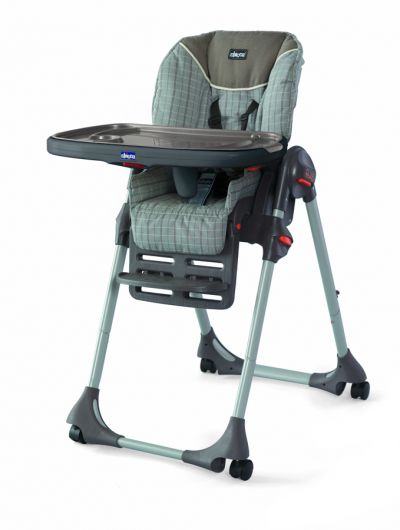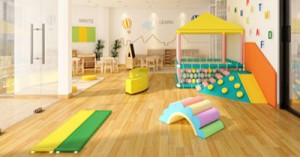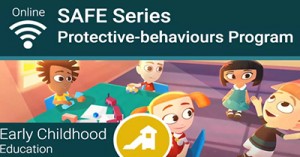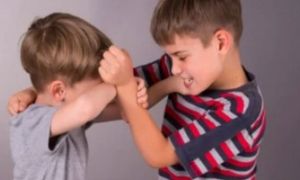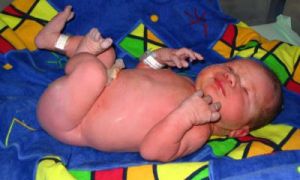High chairs, boosters and hook-on seats are furniture items used to support children while they are being fed. They are generally used from six months of age, when the child begins solids, to approximately 2 years of age. These furniture items allow babies/children to join their family at the dinner table in an elevated position so that they may enjoy all of the action going on around them.
What are high chairs, boosters and hook-on seats?
High chairs have four long legs and a footrest. They are fitted with a detachable tray, which rests in front of the child. In addition to acting as a table, the tray serves as a second restraint which keeps the child from falling out of the chair. High chairs also come equipped with primary restraints or harnesses.
Booster seats are devices made to fit on standard chairs to help raise toddlers to an adult height while at the table. Additional features may include a removable tray used to convert a booster seat into a high chair and inner straps to help secure the child in the booster.
Hook-on seats are similar to booster seats. However, unlike booster seats that are used with standard chairs, hook-on seats are attached to a table by a locking system. They are generally fitted with harnesses to restrain children in the correct position in the seat.
How may children be injured when using high chairs and seats?
Entrapment
- Children may become entrapped if a folding high chair collapses.
- Children may get their small fingers and limbs caught in gaps.
Falls
- If children are not restrained properly or left unrestrained, they may slip down under the tray/table and sustain injury by falling to the ground.
- If unrestrained and unsupervised, children may stand upon the chair or seat and as a result, topple over or slide under the tray/table, falling to the ground.
- If on wheeled furniture, active children may also be able to push off from the table or from against a wall, causing the high chair to tip over.
- A chair or seat may tip over as a result of children rocking back and forth while standing on them.
- An active child in a booster seat may move the booster to the edge of the chair causing the booster to slide off the chair or tip over. The same child is capable of dislodging the grips of a hook-on seat enabling the seat to disengage from the table and fall to the ground with the child still in it.
- Children may fall off higher surfaces, if booster seats are used on top of tables and kitchen counters. Children grow and develop rapidly during the first few years of life. Hence, a child who sits still one day may experiment standing up the next day.
- Strangulation
If children are not restrained properly or left unrestrained, they may slip down under the tray/table, become trapped and be strangled by the restraints.
How common are these injuries?
Feeding aides such as high chairs, booster seats and hook-on seats have been associated with entrapment, falls and strangulation injuries in young children. They account for 25% of the injuries related to nursery furniture in NSW.
Is there a Law or an Australian Standard for high chairs and seats?
It is recommended that manufacturers of high chairs follow the Australian Standard (AS 4684-2009). The Children’s Hospital at Westmead recommends that you purchase a high chair that meets this standard. Please keep in mind the safety reminders below when choosing a high chair, booster seat or hook-on seat.
Remember
- A feeding aide should only be used on or after the age of 6 months when your child is comfortable in a sitting position and is able to sit unaided.
- Purchase and use high chairs that meet the Australian Standard AS 4684-2009.
- When purchasing booster seats or hook-on seats, ensure that it is stable and has a strong and durable five-point harness (straps over shoulders, hips and crotch). If a restraint is not provided, purchase one that is appropriate for your feeding aide. Hook-on seats need to have excellent slip-resistant mounting devices that help keep the seat level. When possible, choose a seat that has a post separating the child’s legs so as to prevent the child from slipping down.
If you are buying a second hand product, check that it is in good order. If a harness is not available or is not in a good condition, replace it with an appropriate restraint. If you are purchasing a hook-on seat, check that the gripping mechanism remains in working order.
- If you are purchasing a hook-on seat, make sure that the table holding the chair is heavy and is able to support the seat and child without tipping over. Do not use the seat on a glass table or a table with a single stand. Also do not use the seat with a table cloth or place mats.
- Make sure that you use the restraints every time your child is in the seat.
- When you are raising or lowering the tray, make sure your child’s hands are free from moving parts.
- Do not allow your child to stand up on a feeding aide or get in or out of one without assistance.
- Always place the chair or seat away from windows, unsecured doorways, stoves, appliance cords and curtain or blind cords. Make sure your child cannot push against a vertical surface such as a wall or cupboard, thereby tipping over the chair/seat.
- Never leave your child unattended in a feeding aide; if you need to leave his/her side, take your child with you.
- Regularly check your high chair or seat to make sure there are no loose or broken parts. Repair or replace torn seats from which foam may be exposed and present a choking hazard.
- When not in use, put feeding aides out of children’s reach.
The Children’s Hospital at Westmead recommends that you check for products that have been recalled (www.recalls.gov.au) prior to buying or borrowing an item for use with your child.
References
NSW Department of Fair Trading
Aussie Childcare Network acknowledges the co-operation of The Children’s Hospital at Westmead, Sydney Children’s Hospital and Kaleidoscope, Hunter Children’s Health Network in making this fact sheet available.
Disclaimer: This article is for education purposes only. Please consult with your doctor or other health professional to make sure this information is right for your child.


